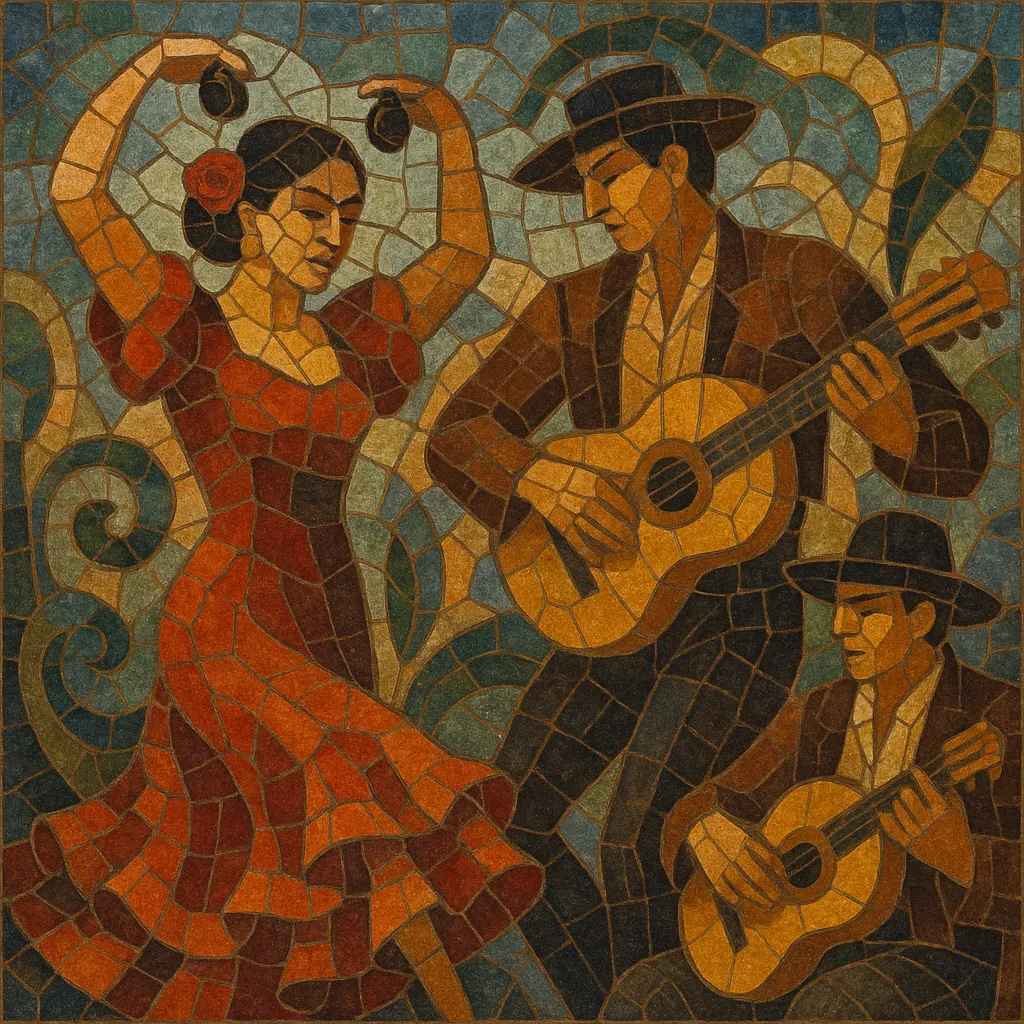Seguidilla is a lively Spanish song-dance from Castile characterized by quick triple meter, agile steps, and light, witty strophic texts. Its poetic stanza typically alternates 7- and 5-syllable lines with assonant rhyme on the even lines, giving the form a crisp, aphoristic feel.
Musically it favors brisk 3/4 with frequent hemiolas (the feeling of 2 against 3) and simple diatonic harmony, often articulated by guitar, bandurria, and palmas, with castanets accenting the dance figures. Regional variants arose across Spain; the Andalusian branch led to the popular sevillanas, while composers adapted seguidillas for the art-music stage and salon.
Seguidilla emerged as a Castilian song-dance in the 18th century, drawing on earlier Iberian verse practice (the seguidilla stanza) and rural Spanish dance traditions. Its compact, epigrammatic poetry (7-5-7-5 syllables) and quick triple-time dance steps made it ideal for social dancing and street performance.
By the late 1700s and 1800s, seguidillas were ubiquitous in taverns, salons, and local festivities. Regional flavors proliferated (e.g., seguidillas manchegas, murcianas), and the Andalusian offshoot evolved toward the sevillanas. The form interacted with other Spanish dances such as the fandango and the jota, sharing rhythmic drive and guitar-based accompaniment.
Spanish composers and visiting Europeans carried the seguidilla into art music. In zarzuela, seguidillas became a stock number, while concert and salon composers wrote vocal and piano settings. Internationally, the term reached a massive audience via Bizet’s “Seguidille” in Carmen (1875), which stylized Spanish dance idioms for the operatic stage. In the 20th century, Manuel de Falla and others quoted or reimagined seguidilla rhythms and strophic clarity within modern classical language.
Today, seguidilla survives both as a folk dance-song—performed with guitars, bandurrias, and castanets at regional fiestas—and as a concert reference point. Folklorists and ensembles from Castile have preserved and revived local variants, while the sevillanas remains a widely danced descendant.


